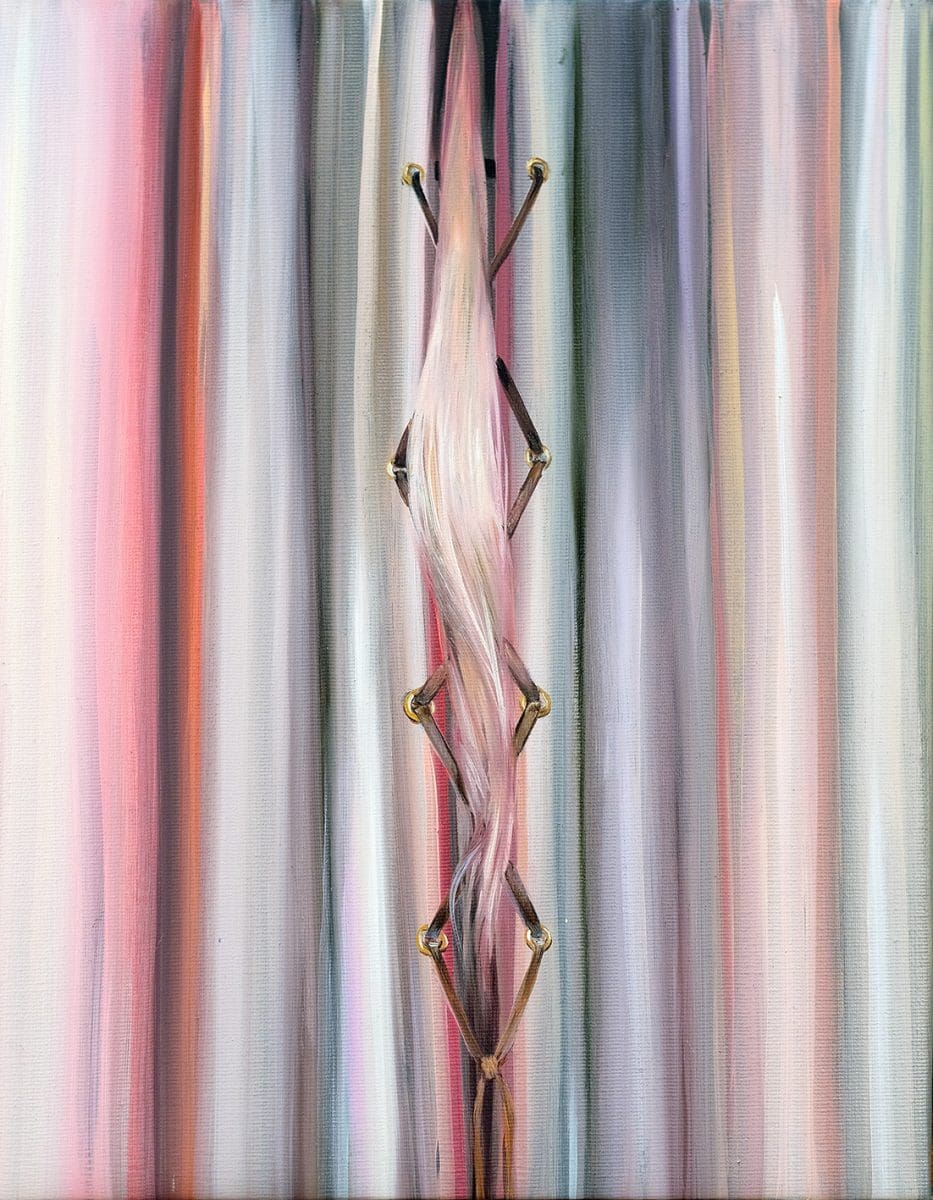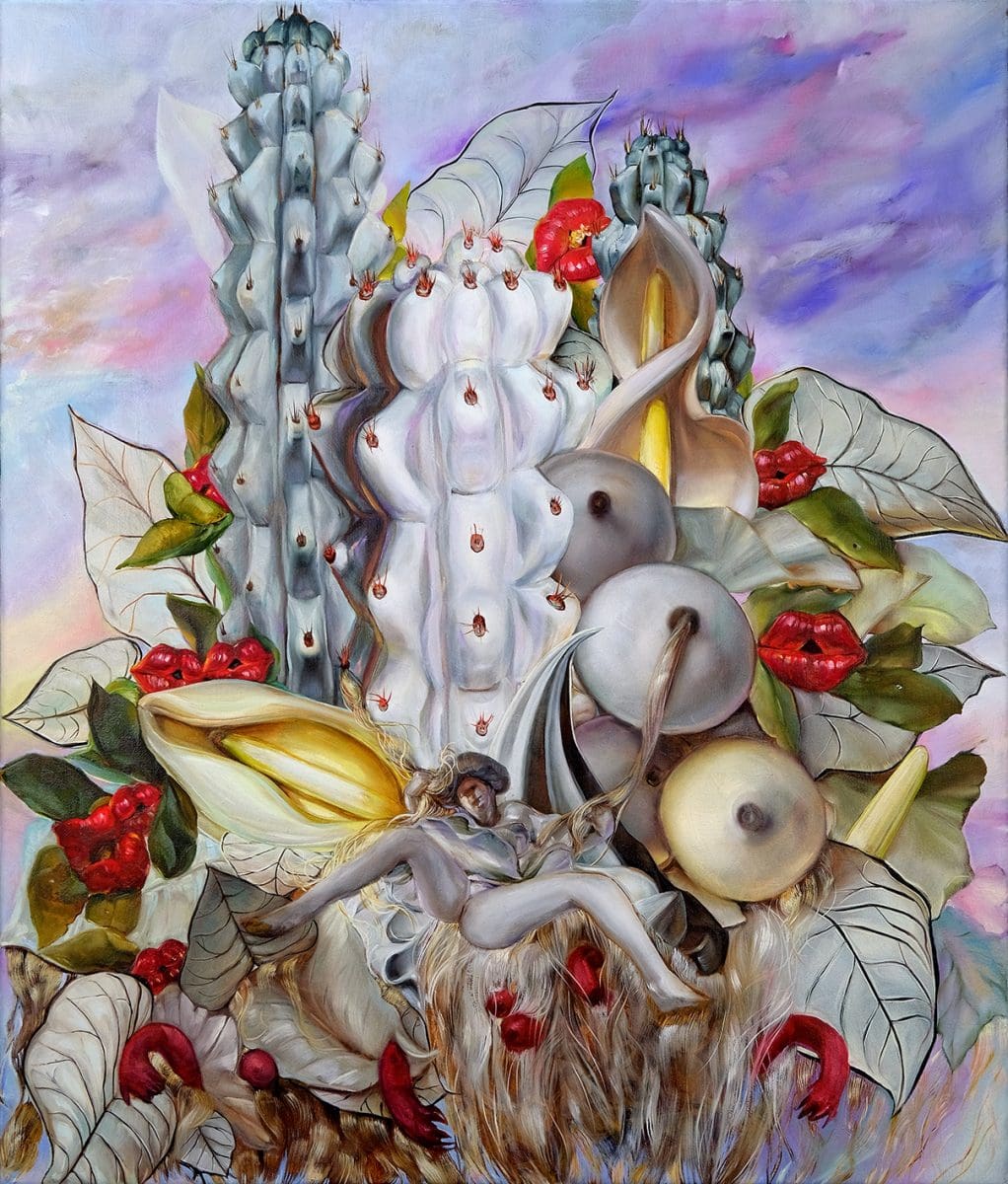
Making Space at the Table
NAP Contemporary’s group show, The Elephant Table, platforms six artists and voices—creating chaos, connection and conversation.





Karla Marchesi is taking her exploration of still life even further. While her earlier work probed sociocultural conditions which define our age, using dramatic chiaroscuro, her latest paintings are a contrast of her floral forms, both in tone and colour. Rather than being cloaked in darkness, they are expressed directly, as though under glaring fluorescent light.
Residing in Berlin since 2012, Marchesi frames her solo at Jan Manton Gallery through the Greek goddess Baubo. Known for her liberated sexuality and bawdy humour, the Baubo empowers female agency; the ability of the vagina to critique power, identity and relationships. “The key to this work is a metaphor of violence and vulnerability,” says Marchesi. “Last year my feelings were stirred up by Australian politics and the female reckoning that continues to unfold. Drawing on my own experience, a quiet rage started gestating in the work.”
In Marchesi’s art, real flowers and succulents reassemble human anatomy, featuring genitalia, lips, eyes and orifices. In her painting Swingers, Marchesi appropriates a figure from French artist Jean-Honoré Fragonard’s 18th-century painting, The Swing. Here the figure is depicted playfully, “full frontal and pantless”, echoing the open legs of the Baubo goddess, with phallic cactuses emerging from flowers and gumnuts growing points like nipples. Lips sit between organic forms, and human hair moves amid each arrangement, all crowding forward on the picture plane.
For Marchesi, these works evoke the “power of a female body to be embodied with agency, joy and self-possessed humour, without being coded by a male gaze. The collection tragicomically plays on modern relationships, pitfalls of contemporary dating, with sexual and gender thematics upending tropes of Romanticism.”
Also at work here is the zeitgeist: years of pandemic-enforced isolation, and increasing global political instability. Marchesi paints her “impossible bouquets”, each delivered on target.
Desire Path
Karla Marchesi
Jan Manton Gallery
8 June—26 June
This article was originally published in the May/June 2022 print edition of Art Guide Australia.